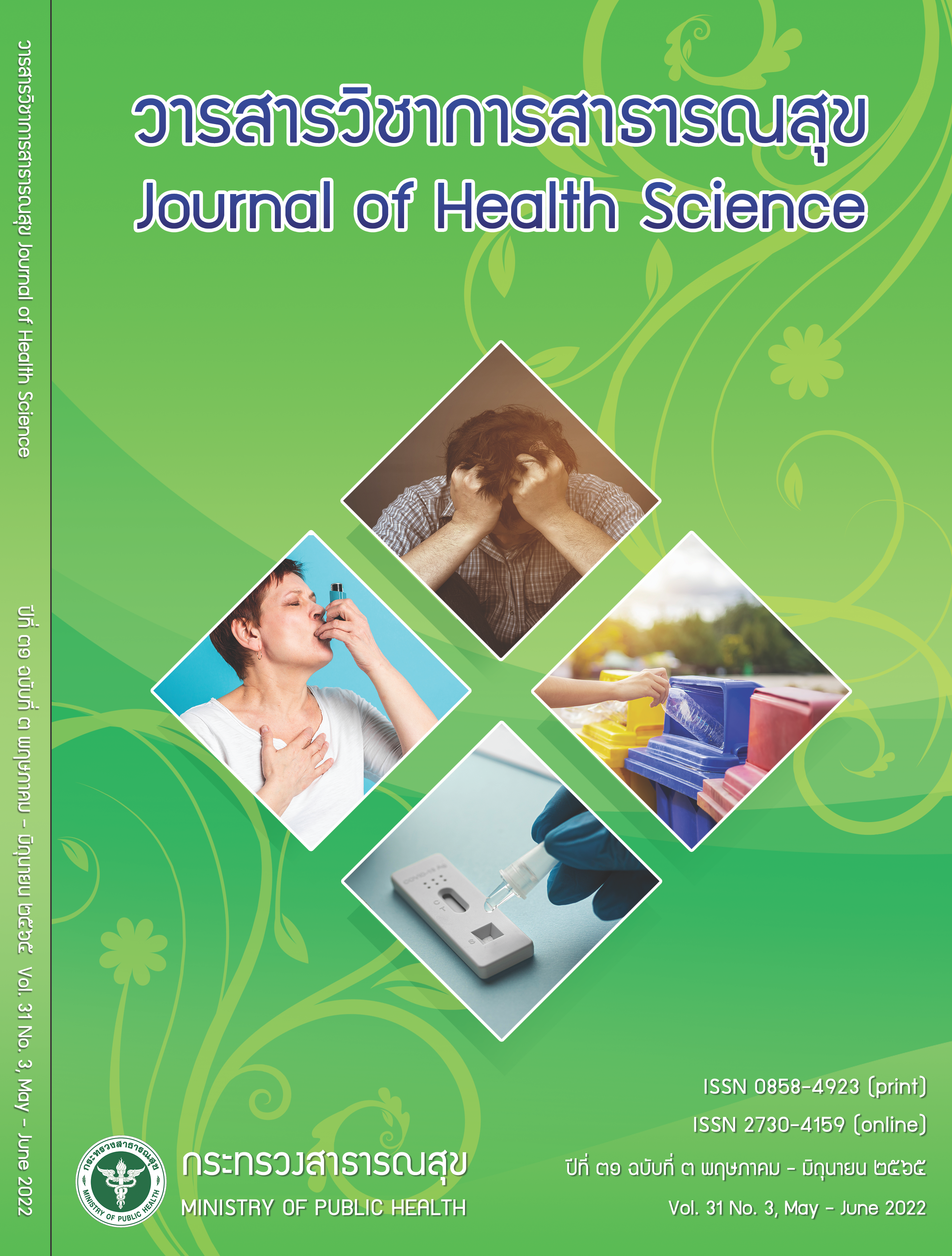Prevalence of Carbapenem–Resistant Enterobacteriaceae in Chiangrai Prachanukroh Hospital, Chiangrai Province, 2016-2020
Keywords:
carbapenem-resistant Enterobacteriaceae, carbapenems, drug-resistant geneAbstract
The increasing prevalence of carbapenem-resistant Enterobacteriaceae (CRE) has become a worldwide public health problem. Drug resistance in CRE is caused by the production of carbapenemase enzyme from a gene located on a chromosome or mobile genetic elements like plasmids. It leads to the spread of antimicrobial resistance genes among Enterobacteriaceae strains worldwide. This retrospective descriptive study aimed to determine the prevalence of CRE and its drug resistance patterns at Chiangrai Prachanukroh hospital between 2016 and 2020. This study collected data from Enterobacteriaceae isolate, and then analysed the CRE prevalence, including the gender of patients, hospital department, specimen types, Enterobacteriaceae species and the patterns of antimicrobial resistance genes. As a result, 14,410 isolates were identified, and 859 of them represented CRE. The prevalence of CRE from 2016 to 2020 constantly increased with the percentage of 4.01%, 4.22%, 6.36%, 6.64% and 8.86%, respectively. According to the host, most CRE was reported in males. Interestingly, CRE was primarily found in urine, followed by sputum, blood and pus, respectively. The highest CRE was found in Medicine wards. K. pneumoniae, E. coli and E. cloacae infection were top-three of CRE. One hundred and thirty isolates of CRE were further designed to detect carbapenemase-encoding genes. The result showed that 73.08%, 2.31% and 1.54% of these CRE harboured blaNDM-1, blaOXA and blaIMP, respectively. In contrast, 19.23% of these CRE carried both blaNDM-1 and blaOXA. Notably, the coexistence of five resistance genes, blaNDM-1, blaOXA, blaIMP, blaKPC and blaVIM, was found in 5 CRE isolates (3.85%). This study indicated that CRE infection could be a severe drug-resistant problem in hospitals due to the increasing CRE infection rate every year. Therefore, a practical guideline of infection prevention and control is required to reduce the problem and limit the spread of drug resistance in hospitals.
Downloads
Downloads
Published
How to Cite
Issue
Section
License

This work is licensed under a Creative Commons Attribution-NonCommercial-NoDerivatives 4.0 International License.







